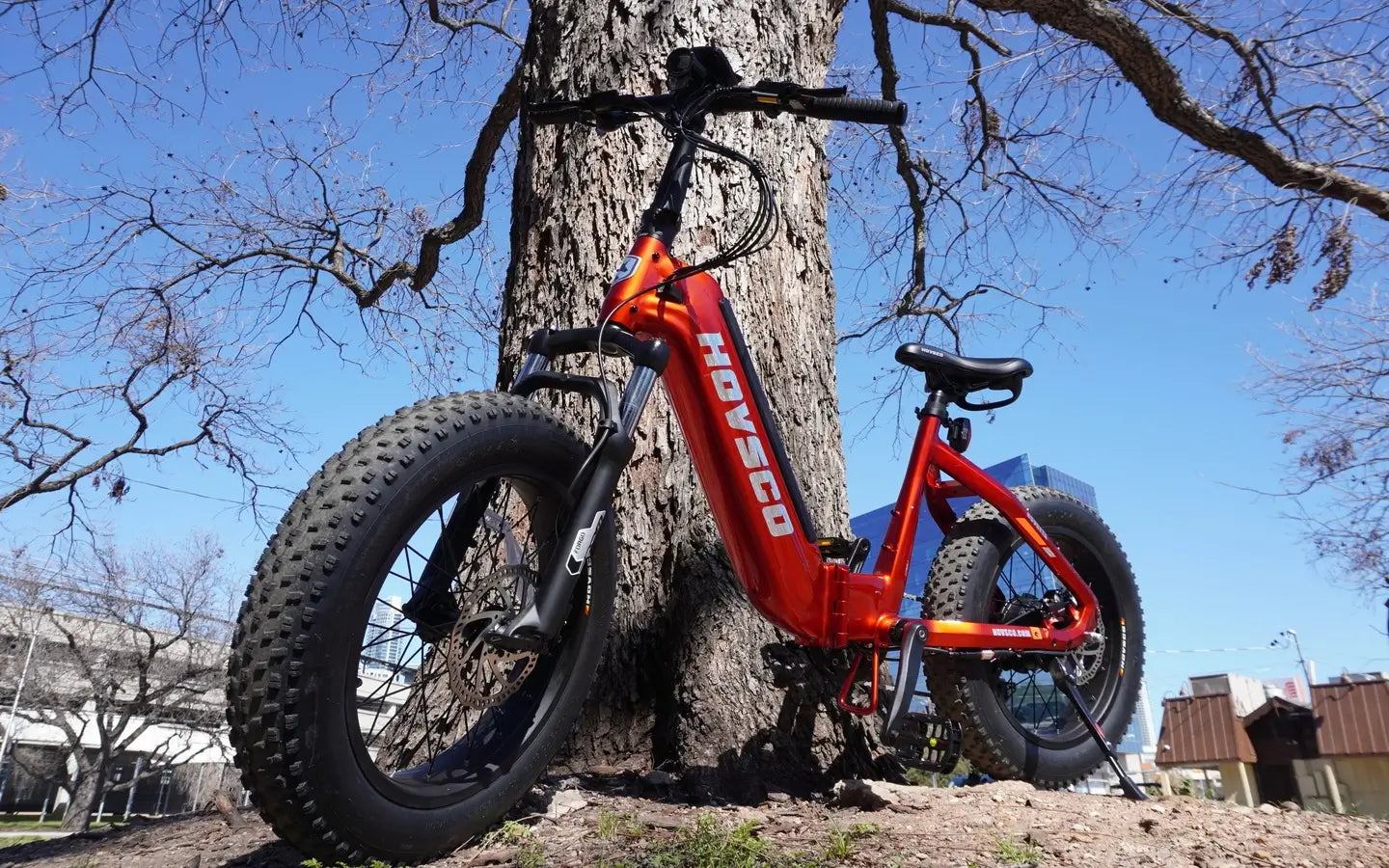
- by LiuJiazhu
What Are Eco-Friendly Urban Commuter Electric Bikes?
- by LiuJiazhu
Eco-friendly urban commuter electric bikes are sustainable, efficient, and practical transportation solutions designed to reduce carbon emissions and ease city congestion. These e-bikes combine electric pedal-assist motors, long-lasting batteries, and commuter-friendly features like integrated lights, fenders, and racks, enabling riders to navigate urban environments swiftly and sustainably in 2025.
Eco-friendly urban commuter electric bikes produce zero tailpipe emissions, helping reduce air pollution and carbon footprint compared to cars and motorbikes. They use rechargeable lithium-ion batteries that, despite environmental costs in production, offer a cleaner alternative to fossil fuels. Lightweight frames and efficient motors maximize energy use, while features like regenerative braking and sustainable materials further enhance their green credentials. Why Choose Step-Through Fat Tire Ebikes For Cities?
Top eco-friendly urban commuter e-bikes include:
| Model | Motor Power | Battery Range | Key Features |
|---|---|---|---|
| HOVSCO HovCity Series | 500W | Up to 60 miles | Step-thru frame, integrated lights, fat tires for stability |
| RadPower RadCity 6 Plus | 750W | Up to 45 miles | Puncture-resistant tires, 7-speed transmission, integrated lights |
| Lankeleisi MG600 Lite | 500W | Up to 40 miles | Ultra-light frame, high-speed motor, sleek design |
| Virum Series 2025 (Hygge Bikes) | Lightweight motor | Up to 40 miles | Foldable design, compact footprint, eco-friendly materials |
By replacing car trips with electric bike rides, commuters reduce greenhouse gas emissions and urban air pollution. E-bikes also alleviate traffic congestion, reduce noise pollution, and promote healthier lifestyles through active transportation. Their compact size and agility make them ideal for dense urban areas, enabling riders to bypass gridlocks and park conveniently.
Integrated LED lights enhance safety during low-light conditions, while fenders and racks add convenience for carrying cargo or groceries. Many models feature puncture-resistant tires and low-maintenance belt drives, reducing waste and upkeep. Foldable designs like the Virum Series enable multi-modal commuting, combining e-bikes with public transport for a greener journey.
Modern lithium-ion batteries offer ranges from 40 to 60 miles per charge, sufficient for most urban commutes. Advances in battery technology, including emerging sodium-ion cells, promise lighter, safer, and longer-lasting batteries with lower environmental impact. Efficient power management and regenerative braking extend battery life, reducing the frequency of charging and resource consumption.
In many regions, including the UK, e-bikes must have motors capped at 250W continuous power and assist cut off at 15.5 mph to be road-legal without a license. Infrastructure improvements like dedicated bike lanes and secure parking enhance the usability and safety of urban e-bikes, encouraging wider adoption and supporting sustainable transport goals.
When choosing an eco-friendly urban commuter electric bike, prioritize models with efficient motors between 250W and 750W and battery ranges of at least 40 miles to cover daily routes. Look for integrated safety features like lights and reflective elements, durable puncture-resistant tires, and practical additions such as racks and fenders. Consider foldable designs for storage and multi-modal commuting. Brands like HOVSCO, RadPower, and Hygge Bikes offer innovative, sustainable options that balance performance, comfort, and environmental responsibility.
“HOVSCO’s commitment to eco-friendly urban commuting is evident in their e-bikes’ efficient motors, durable components, and thoughtful design. By integrating fat tires for stability and step-thru frames for accessibility, HOVSCO empowers riders to embrace sustainable transportation without compromising comfort or style.” – HOVSCO Product Specialist
“Urban e-bikes are revolutionizing city travel by reducing emissions and congestion. Advances in battery technology and lightweight materials are making these bikes more accessible and environmentally friendly than ever before.” – Sustainable Mobility Analyst
What makes an electric bike eco-friendly?
Zero emissions during use, efficient motors, sustainable materials, and battery technologies that minimize environmental impact contribute to eco-friendliness.
How far can eco-friendly urban commuter e-bikes travel?
Most offer ranges between 40 and 60 miles per charge, suitable for typical urban commutes.
Are foldable e-bikes eco-friendly?
Yes, foldable designs encourage multi-modal transport, reducing car dependency and supporting sustainable travel.
What safety features should I look for?
Integrated lights, reflective elements, hydraulic or mechanical disc brakes, and puncture-resistant tires enhance safety.
Which brands lead in eco-friendly urban commuter e-bikes?
HOVSCO, RadPower, Hygge Bikes, and Lankeleisi are notable for combining sustainability with performance.
Share:
What Do Hovsco 27.5 City E-Bike Reviews Say?
How To Find Affordable Step-Thru Electric Commuter Bikes?